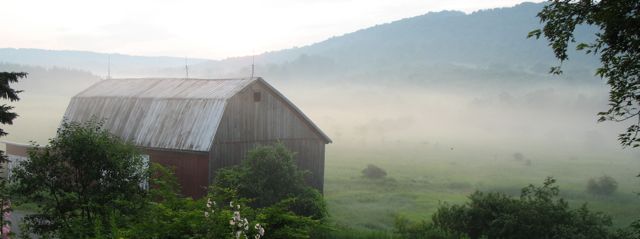On
August 2, 2011 the town of Dryden amended its zoning ordinance to ban all
activities related to the exploration for, and production or storage of natural
gas or petroleum. The town was sued by the Anschutz Exploration Corporation.
Anschutz claimed that the New York State Oil, Gas and Solution Mining Law overrides
all local ordinances related to natural gas drilling. Tompkins County Supreme
Court Judge Phillip Rumsey disagreed and ruled that although the Oil, Gas, and
Solution Mining Law does indeed regulate those industries, they are still
subject to local regulations and zoning.
Mahlon Perkins,
Dryden town attorney stated, “That was the crux of the town’s argument all
along… it is important to remember that this case is not about fracking….this
case is about land-use authority. It comes down to whether a municipality that
has land-use authority-- such as a village, city, or town can determine where
heavy industrial uses are allowed or if they are allowed, and it is not about
regulating the industry.”
State
Assemblywoman Barbara Lifton, whose district includes the town of Dryden, said
she was not surprised by the ruling. “I cannot say that I am shocked because I
think the arguments for home rule are very compelling… I am thrilled the judge
gave us a fair hearing and upheld our State’s tradition of home rule. It was a
very logical decision and one that I strongly agree with.”
On June
28, 2011 the town of Middlefield enacted a zoning law that prohibited heavy
industry and all new oil, gas, and solution mining. On October 28, 2011 the
town of Middlefield was sued by a landowner who had signed a lease with a gas
company claiming that the lease superseded the zoning law and that the zoning
law should be declared void. In the second ruling last week, State Supreme
Court Justice Donald Cerio affirmed that the town of Middlefield was within its
rights under state law to ban oil and gas drilling. Judge Cerio, like Judge
Rumsey, affirmed New York State’s right to regulate how the gas industry
operates, and the towns right to determine where
that industry may or may not operate.
Both
decisions are expected to be appealed.
I think
it is important to remember that on Thursday, Dec. 8 the Alfred Town Board
adopted a resolution to become a “friend of the court” in the Dryden and
Middlefield proceedings. The Board passed unanimously a statement in “support
of its sister towns in order to reassert the right of municipalities throughout
New York State to determine what land uses are appropriate through the
municipal home rule powers granted by the New York State Constitution and the
New York Municipal Home Rule Law.”
In
response to these two rulings Helen and David Slottje, lawyers who helped draft
Alfred’s one year moratorium on hydrofracking said, “…Local elected officials across
the state have stood strong and stood together, with the unflinching backing of
so many of their residents….This strength and resilience was tested by these
lawsuits….[B]ecause the members of the town boards in Dryden and Middlefield
were willing to exercise their right to protect their citizens and stood firm
in their convictions, we now have definitive answers from two separate courts
that clearly support community rights.”
As
reported in Rochester’s Democrat and
Chronicle, when Governor Cuomo was asked about municipalities’ rights to
enact bans against gas drilling he said, “… I believe that it’s up to the
courts. And if the courts say they have that right, they have that right.”
The
right of towns to determine their own fate and protect their very nature and
character is something that we have taken for granted. Fracking has changed all
of that. We have now received legal affirmation of this right and I find this
tremendously heartening.
________________________________________________
The
actual court documents are interesting to read. The Dryden document can be
found at :
The
Middlefield document can be read at:


